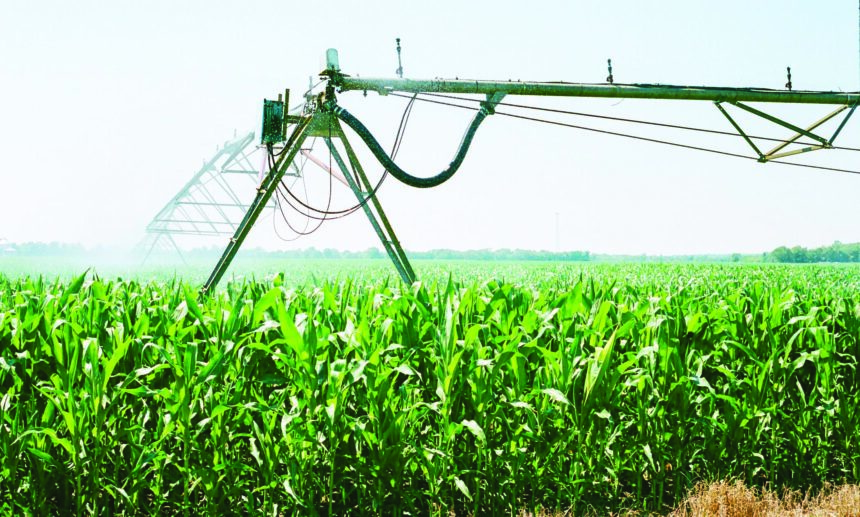Four children died and 188 people have been admitted to medical facilities in the Hardap region due to malnutrition.
These admissions include 109 cases of malnutrition recorded in Rehoboth, 62 in Mariental and 17 in Aranos between January and August 2024.
The scary statistics were highlighted in a recent disaster risk management report for the Hardap region, presented during a familiarisation visit by the Parliamentary Standing Committee on Gender Equality, Social Development and Family Affairs.
As if this was not enough, a dark cloud now hovers over the Hardap irrigation scheme as water supplies dwindle to alarming levels, casting a shadow of despair on farmers and local businesses.
The nearby Hardap Dam’s level is standing below 6%, a situation which has prompted NamWater to suspend the supply of water for irrigation, prioritising potable water for residents amid a prolonged drought.
Last week, some households in Mariental, Hardap’s capital, went for days without potable water.
Maria Elago, a member of the parliamentary standing committee, emphasised the importance of proactive community engagement in addressing malnutrition. She urged local health facilities not to wait for government assistance, but to take initiative by establishing backyard gardens as a sustainable solution to improve food security and nutritional outcomes.
“Communities must leverage local resources, and engage in agricultural practices which can provide immediate nutritional support. Such initiatives not only address immediate nutritional needs, but also foster self-sufficiency and resilience within communities,” she stated.
The deaths of children and admissions to hospital are attributed to unspecified, severe protein-energy malnutrition.
Malnutrition is caused by deficiencies or excesses in nutrient intake, an imbalance of essential nutrients, or impaired nutrient utilisation. The double burden of malnutrition consists of under0nutrition, overweight and obesity, as well as diet-related non-communicable diseases.
Weight loss attributed to the depletion of fat and muscle mass, including organ mass, is often the most obvious sign of malnutrition.
Muscle function declines before changes in muscle mass occur, suggesting that altered nutrient intake has an important impact which is independent of the effects on muscle mass.
In response to the rising cases of malnutrition, all patients diagnosed with moderate acute malnutrition and severe acute malnutrition without complications are treated as outpatients.
This means they receive Ready-to-Use Supplementary Foods’ (RUSF) sachets to provide essential nutrients and calories necessary for recovery. RUSF is a lipid-based nutrient supplement fortified with vitamins and minerals, specifically formulated for children aged from six months.
The report added that more than 1 500 individuals have been enrolled in the Nutrition Assessment and Counselling programme. This initiative focuses on providing nutritional guidance and support to those at risk of malnutrition. Notably, 365 participants successfully reached their target weights and were discharged from the programme, indicating some positive outcomes amid the ongoing challenges.
Water crisis
On the water crisis facing the region, chairperson of the Hardap Farmers Association Dawie de Klerk expressed disappointment at the suspension of water supplies to irrigation schemes.
“Irrigation came to a halt around 04h00 on Thursday last week. This is not just a setback, it’s a crisis that threatens the very livelihoods of many,” he lamented.
As farmers and local businesses grapple with uncertainty and dwindling resources, the stakes have never been higher. The ripple-effects of reduced irrigation threaten not only agricultural productivity, but also food security and economic stability in a region already grappling with drought.
De Klerk pointed the finger at a government-imposed moratorium which restricts the Hardap Dam’s storage capacity to 70%.
“This decision, made after the devastating floods of 2006, has left us in dire straits,” he emphasised.
“If the moratorium was lifted, we would have an additional 30% of water in the dam right now, enough for another year of full irrigation. Maintaining this 70% limit is detrimental to our entire economic system,” he added.
De Klerk further said businesses in Hardap and Mariental are already feeling the pinch.
“We had to lay people off because we can’t keep people with no business going on,” he added.
Fellow businessman Monty Ndjavera echoed similar sentiments, asking for urgency to the call for action.
“What is the government’s plan to ensure this will not happen again?” he asked, highlighting the need for strategic solutions like linking the Hardap Dam with the Neckartal Dam.
“We need a plan that goes beyond temporary fixes; we need sustainable solutions,” said Ndjavera.
In response to mounting concerns, minister of water affairs Calle Schlettwein acknowledged the sad and catastrophic reality facing Namibia.
“We find ourselves in a difficult situation with cuts to irrigation schemes,” he admitted. However, he assured citizens that plans are on the table to lift the moratorium, while refurbishing both the dam and its canals.
“We are considering raising the threshold above 70%, or even to full capacity,” he stated. Schlettwein also emphasised the importance of encouraging farmers to adopt less water-intensive practices as part of a broader conservation strategy.
Feasibility studies are currently underway to assess how best to utilise the Neckartal Dam’s substantial capacity of 857 million cubic meters. “One of the solutions is linking dams in the country, including the Hardap Dam, with the Neckartal Dam,” he said, emphasising that this connection could enhance water management and irrigation efforts across the region.
The Neckartal Dam, Namibia’s largest dam, was constructed with ambitious plans for irrigation and economic development in mind.
Meanwhile, NamWater spokesperson Lot Ndamanomhata sought to reassure residents, amidst growing anxiety. “This decision is necessary due to current water levels. However, it does not affect drinking water supplies for Mariental or surrounding communities”, he noted. He said this proactive approach aims to secure essential water reserves for human consumption and livestock needs until at least February 2026.
-mndjavera@nepc.com.na


